El Polar Pacer Pro es la creación de una nueva gama que, en cierto sentido, pone un clavo en el ataúd del Polar Vantage M2 (al que no sustituye, sigue estando a la venta). Ambos tienen el mismo precio pero el Pacer Pro añade características específicas de modelos de gama superior como los Grit X o V2: altímetro barométrico, estimación de potencia en carrera, Hill Splitter, navegación…
Con el Pacer Pro Polar no está lanzando un reloj revolucionario, de hecho no aporta nada nuevo a la gama. Pero sí que está llevando muchas funciones específicas de modelos más caros a un reloj de gama media. Pero no aportar nada nuevo en cuanto a software no quiere decir que sea lo mismo de siempre. Hay un nuevo procesador, más memoria, nuevo display, cambios en la antena GPS… Internamente es un paso adelante con respecto a los modelos predecesores.
En cuanto al nombre del modelo no es una elección trivial. El Polar Pacer ya existía en la gama de la marca finlandesa al principio de los años 90. Su característica estrella era poder conectarse con un sensor de pecho de forma inalámbrica, y contaba con otros adelantos como una pantalla de dos líneas, aviso de pulsaciones superior e inferior y tiempo de ejercicio. El nuevo modelo supone un «pequeño» salto en la gama y en las posibilidades que ofrece.
Como siempre me gusta recordar, las pruebas y análisis que ves en la página se realizan sin ningún tipo de contraprestación o presión por parte de las marcas lo cual me da libertad absoluta para contarte todo lo bueno y lo malo de cada dispositivo. Así que si te gusta el contenido que aquí encuentra puedes ayudar a soportar la página comprando tu nuevo Polar Pacer Pro (o cualquier otra cosa…) a través de los enlaces que encuentras en esta página. De esa manera recibiré una pequeña comisión que es lo que soporta la página y las muchas horas necesarias para realizar todas estas pruebas.
Y una vez aclarado esto vamos con todos los detalles del nuevo modelo. Si lo prefieres en vídeo y en formato rápido, aquí te dejo las 10 cosas principales que debes conocer del Polar Pacer Pro y, una vez entrados en materia, puedes leer el análisis completo tras el salto.
Navegar a secciones específicas
POLAR PACER PRO
Funcionamiento global - 8.5
Posibilidades de entrenamiento - 8
Plataforma y aplicaciones - 9
Autonomía - 9
Acabados y comodidad - 8.5
Relación precio/prestaciones - 9.5
8.8
TOTAL
Puede parecer que no hay cambios, pero en este Polar Pacer Pro hay mucho que rascar. No hay novedades específicas para Polar, pero sí una oferta muy interesante dentro de su gama y que por precio prácticamente descarta a todos los demás modelos de la marca.
Lo mejor
- Precio competitivo
- Procesador más rápido
- Muy ligero
- Buena autonomía
Necesita mejorar
- No hay novedades específicas (sólo Walking Test)
- No importa entrenamientos de TrainingPeaks
- Sólo tiene avisos por vibración, no hay sonoros
Características Polar Pacer Pro
El Polar Pacer Pro no es una renovación de la familia Polar, tampoco un producto nuevo. Se trata de crear un producto competitivo a un precio interesante, y puedo dar fe que es lo que Polar ha conseguido. Si ya conoces la gama Polar te sentirás totalmente familiarizado con este nuevo modelo porque, en cuanto al software, apenas vas a encontrar novedades específicas.
Sí las hay en el interior del reloj: el procesador es nuevo y más rápido, hay más memoria, cambios en el sensor de pulso óptico y en la antena GPS, la pantalla es también nueva y con mayor contraste. Supone una renovación interior y la creación de una base prácticamente nueva.
Vamos con una lista de especificaciones y novedades, que es la forma más rápida de que puedas ver qué es todo lo que aporta.
- Nueva plataforma de hardware con un procesador el doble de rápido
- Nuevo sensor de pulso óptico Polar Precision Prime plano, con menos grosor y sin electrodos
- Antena de GPS rediseñada
- Nueva pantalla con mayor contraste, con lente Gorilla Glass 3
- 45mm de circunferencia (1mm y 2mm más pequeño que Vantage M2 y Vantage V2 respectivamente)
- 11,5mm de grosor (1mm y 1,5mm más fino que Vantage M2 y Vantage V2 respectivamente)
- 41 gramos de peso (4,5gr y 11 gr más ligero que Vantage M2 y Vantage V2 respectivamente)
- Bisel en aluminio
- Altímetro barométrico
- Estimación de potencia en carrera
- Navegación de rutas con indicación de giro con Komoot y función de regreso a inicio
- Incluye FuelWise con recordatorios para hidratación y nutrición
- Con Energy Sources para indicar las fuentes de energía en proteínas/carbohidratos/grasas
- Con Hill Splitter, para separar automáticamente los ascensos y descensos durante los entrenamientos
- Training Load Pro, Nightly Recharge, FitSpart, Serene… todas las funciones de seguimiento de carga y descanso de Polar
- Running Test, Cycling Test y un nuevo Walking Test
- Transmisión de frecuencia cardíaca a otros dispositivos a través de Bluetooth
- Funciones de reloj inteligente (notificaciones, control de música, pronóstico del tiempo)
- 35 horas de autonomía, hasta 100 horas con ahorro de energía
- 7 días en modo reloj
- Nuevo cable de carga (al haber desaparecido los electrodos del sensor de pulso)
- Correa de diseño específico, pero se incluye adaptador SHIFT para poder utilizar cualquier correa estándar de 20mm
- Soporta inmersión en agua hasta 50m de profundidad (30m en Vantage M2)
- Cuesta 299€
- Disponible en negro, blanco-rojo, burdeos, azul y verde
Como indicaba al principio ahora mismo no queda mucho hueco para el Polar Vantage M2 en la gama de Polar. No hay nada que el M2 tenga que el Pacer Pro no, y sin embargo el Pacer Pro sí tiene altímetro barométrico, estimación de potencia en carrera, navegación de rutas, test de rendimiento, Hill Splitter, menor tamaño y peso e incluso mayor autonomía.
El Polar Pacer Pro tiene casi todas las funciones de los modelos tope de gama de la marca como Vantage V2 y Grit X Pro (y que son bastante más caros). ¿Qué es lo que no tiene? Pues algunas cosas que probablemente no sean importantes para muchos de vosotros:
- Leg Test no disponible (el test que mide recuperación por la altura de saltos)
- Sin Recovery Pro
- Sin pantalla táctil
- Sin avisos por tonos, sólo vibración
- 50m de resistencia a la inmersión, en lugar de 100m
- Lente Gorilla Glass (zafiro en Grit X Pro)
- Sin sensor de luz ambiental (sí lo tiene el Vantage V2)
- Sin certificación MIL-STD-810G
- 35 horas de autonomía GPS en lugar de 40 horas de Vantage V2 / Grit X Pro
- Más pequeño, delgado y ligero que cualquiera de los otros dos
Así que en cuanto a funciones y especificaciones técnicas, es prácticamente idéntico a los modelos más caros (que cuestan 200€ más).
Polar Pacer Pro, un vistazo rápido
Si ya vienes de tener un reloj de Polar puedes saltarte esta sección tranquilamente y pasar a la siguiente, porque el Pacer Pro apenas ofrece diferencias con respecto a modelos anteriores (aunque sí las hay).
El control del reloj se realiza a través de los botones, en la disposición clásica de Polar desde hace ya unos cuantos años. En este caso Polar ha descartado el uso de la pantalla táctil y, sinceramente, no la echo de menos. La verdad es que en otros modelos de la marca tampoco hago uso de ella.
Hay un total de cinco botones de tamaño generoso y buen tacto. Se nota perfectamente cuándo se ha hecho click en ellos y tienen un buen relieve para no fallar a la hora de pulsarlo incluso con guantes o las manos mojadas. Son dos en el lado izquierdo y tres en el derecho, con el botón principal destacando en color «rojo Polar».
El desplazamiento por el reloj es el habitual de la marca. Tenemos diferentes «escritorios» (que Polar denomina «Vistas») con diferente información en cada uno de ellos. Existe la posibilidad de activar o desactivar cada una de estas vistas por si alguna de ellas no nos interesa, que no entre en la rotación.
Podemos desplazarnos por cada una de estas pantallas pulsando el botón superior o inferior derecho y podremos ir viendo los datos básicos de actividad, recuperación, FC u otras funciones como Fit Spark, Nightly Recharge o el tiempo, entre otras.
Si pulsamos el botón principal entraremos en los datos de cada una de estas secciones. Por ejemplo de Nightly Recharge, para ver cómo ha sido nuestro descanso nocturno (una de las cosas que más me gusta de Polar, la claridad con estos datos).
Al desplazarnos por todas estas pantallas ya vamos a notar diferencias con modelos anteriores gracias al procesador más potente y al aumento de la memoria. No es un cambio brutal, pero sí perceptible porque todo es un poco más ágil a la hora de entrar y salir de los diferentes menús (en el vídeo podréis verlo mejor).
Donde no hay muchas posibilidades de elección es en la esfera de reloj. Podemos elegir entre digital o analógico, y dentro de éstas otros 5 diseños para cada una de las opciones. Suficiente para algunos, corto para los que quieren algo totalmente personalizable.
La pantalla también supone un pequeño cambio incremental con respecto a anteriores modelos de Polar. La resolución es la misma y sigue siendo una pantalla transflectiva, pero es un poco más brillante y con más color que las de los modelos anteriores.
Tengo la impresión que la iluminación de pantalla también es algo más clara. Insisto, no es algo que destaque enormemente, pero comparando un reloj junto a otro se puede apreciar.
En la parte trasera del reloj tenemos un cambio de diseño para el sensor Polar Precision Prime. Mucho más delgado que sus antecesores y ya no sobresale de la carcasa del reloj. Además, ha perdido los electrodos que tenían dos funciones específicas: asegurar que el reloj está en contacto con la piel y servir como pines de carga.
Ese cambio conlleva un cambio en el cable de carga. Los pines se encuentran por debajo del sensor óptico, pero Polar sigue utilizando un cargador de contacto magnético fácil de colocar. Me resulta algo más cómodo que el anterior pues es más difícil que se mueva de su lugar.
El diseño de la correa es similar a la del Vantage V2, en el sentido de que ésta parte desde la carcasa del propio reloj. Sin embargo en el Pacer Pro se incluye el adaptador SHIFT, que nos permite sustituir la correa por cualquier otra tradicional de 20mm de anchura.
El cambio de la correa al adaptador no es del todo intuitivo, pero con un poco de maña se puede hacer rápido y sin demasiado esfuerzo.
Hay cambios con respecto a las notificaciones y es que por fin Polar ha escuchado a muchos de sus usuarios y el reloj permite mostrarlas también cuando estamos entrenando.
Hasta ahora Polar defendía que no quería interrumpir nuestros entrenamientos con las notificaciones. Lo cual me parece bien… pero lo correcto es dejar que sea el usuario el que elija lo que quiere hacer, así que se ha añadido una nueva opción en el menú que nos permite tener las notificaciones activadas o desactivadas durante el entrenamiento (al igual que durante el día a día).
Donde no hay cambios es en la forma de mostrar las notificaciones en el día a día, el reloj sigue esperando a que giremos la muñeca para mostrarla en pantalla en lugar de hacerlo directamente.
Entiendo que se hace por privacidad, pero al igual que antes preferiría que esto fuera una elección que pudiera hacer el propio usuario. Aunque la detección del giro de muñeca es algo mejor en el Pacer Pro que en modelos del pasado (probablemente gracias al procesador más rápido), continúa sin ser 100% fiable. ¿Por qué no tener también la opción de mostrarlas directamente en pantalla sin tener que esperar a levantar la muñeca?
De estas notificaciones (y cualquier otra alerta) nos enteraremos por la vibración del reloj. Y es que el Polar Pacer Pro no incluye tonos sonoros. Es una de las «limitaciones» con respecto a modelos superiores, aunque una vez acostumbrado a la ausencia de tonos es algo con lo que se puede vivir.
Funciones para deporte del Polar Pacer Pro
El Polar Pacer Pro se publicita como un reloj de running avanzado. La realidad es que es eso, pero también mucho más. Al igual que el resto de modelos de la gama de Polar cuenta con perfiles multideporte, natación, etc, lo cual lo convierte en una magnífica opción como reloj de triatlón. De hecho me parece una opción más interesante en su faceta de triatlón que como reloj exclusivamente para correr.
No hay ningún cambio en cuanto a la gestión de perfiles de deporte o en los que están incluidos en el Pacer Pro, toda la gestión la podemos hacer desde la aplicación móvil o desde la web de Polar Flow. Hay decenas entre los que puedes elegir, que vendrán con una configuración de pantallas por defecto pero que podrás cambiar y configurar como tú prefieras.
Como puedes ver tienes diferentes opciones que puedes activar o desactivar en cada uno de los perfiles de deporte, junto con algunas de las prestaciones «estrella» de la gama Polar.
Por ejemplo Hill Splitter, algo que no está presente en el Vantage M2 (porque no tiene altímetro barométrico). Es una función que detecta de forma automática cuándo estás subiendo o bajando una cuesta, cambiando a una pantalla específica con información relevante para esa situación.
Estos son los datos que aparecen en pantalla:
- Distancia que llevamos subiendo o bajando. Es decir, la distancia que tiene “esa vuelta” hasta ese momento.
- Cantidad de metros que llevamos ascendiendo en esta subida. Si fuese una bajada lo que estamos realizando indicaría los metros que estamos descendiendo.
- Ritmo instantáneo.
- El número de subidas y bajadas que llevamos. En la imagen nos indica que estamos en nuestra primera subida.
Además de cambiar de pantalla, irá grabando todos esos «pedazos» del entrenamiento por separado.
Dependiendo del perfil que estés utilizando, entenderá que estamos subiendo una cuesta cuando hayamos subido 5/10/15 metros en una distancia determinada. Lógicamente no es igual para todos los deportes:
- 5 metros: Carrera, caminata u otros deportes a pie
- 10 metros: Ciclismo y esquí de fondo
- 15 metros: Perfiles de descenso
Es una función automática que no requiere que esté cargada una ruta. En ese sentido es diferente a la función Climb Pro de Garmin en la que nos indica cuánto desnivel nos quedaría por delante en la subida. Polar sí que ofrece la opción de mostrar el perfil de ruta cuando estamos realizando la navegación, pero no entra a detallarte cuál es la pendiente de cada una de ellas.
Luego tenemos FuelWise, una función que sí está más estandarizada en la gama de Polar y disponible en modelos de gama media y alta. Se divide en dos funciones, alimentación durante el entrenamiento y la información de fuentes de energía que da al terminar la actividad.
La primera de ellas es un asistente de hidratación y nutrición. Permite configurar alertas con un recordatorio para beber y comer. Pueden ser manuales (por ejemplo un recordatorio cada 20 minutos), pero la parte interesante son las alertas automáticas en las que el propio reloj, en función de cómo vaya nuestro entrenamiento, nos indicará cuándo debemos comer.
Esta configuración hay que prepararla antes de comenzar a través del menú de Alimentación, definiendo tres valores:
- Duración del entrenamiento
- Intensidad, en función de la zona de frecuencia cardíaca (de Z1 a Z5)
- Carbohidratos por ración, que debes obtener de la composición del gel o barrita que utilices en tus entrenamientos.
Tras indicar esos tres valores y juntándolo con los datos que conoce de tu condición física e historial de entrenamiento, nos indicará el total de carbohidratos que vamos a tener que consumir y el número de tomas que vamos a tener que realizar.
¿Y si el entrenamiento se alarga o es más intenso de lo esperado? FuelWise irá modificando el número de recordatorios y frecuencia para adaptarse al consumo real de energía que estés realizando.
Y tras completar el entrenamiento el reloj mostrará cuáles son las fuentes de energía que hemos utilizado, algo que dependerá de la intensidad del mismo y que separará en hidratos de carbono, proteínas y grasas.
Luego tenemos las funciones ya básicas de Polar y que forman parte de todo su ecosistema:
- Training Load Pro: Medición acumulativa de carga de entrenamiento a lo largo del tiempo.
- Sleep Plus Stages: Análisis de las fases del sueño y de la tendencia.
- Nightly Recharge: Seguimiento de recuperación a través de los datos del sueño. No es compatible con Recovery Pro, tenemos que elegir uno u otro.
- Fitspark: En función de los datos de carga y recuperación indicados anteriormente, aporta sugerencias de entrenamientos para fuerza, cardio o complementario.
También gracias al altímetro barométrico tenemos estimación de potencia en carrera, que llegó con el Vantage V y que ha permanecido sin cambios desde entonces. Para obtener este dato no necesitamos ningún tipo de sensor adicional ya que es el propio reloj el que hace los cálculos partiendo de los datos introducidos al configurar el reloj, el ritmo de carrera y si estamos subiendo o bajando una pendiente.
No quiero detenerme demasiado en este tema en el análisis del Polar Pacer Pro, pero si no conoces detalles de la potencia en carrera te recomiendo que eches un vistazo a la guía completa de correr con potencia que tengo publicada en la web, si eres nuevo en este concepto te ayudará a comprender cómo funciona y qué puedes obtener con ese dato en tus entrenamientos.
Aprovechando que acabo de hablar de sensores, el Polar Pacer Pro permite conectar a múltiples sensores externos pero exclusivamente a través de Bluetooth (es decir, no hay soporte para ANT+). Estos son los tipos de sensores soportados:
- Frecuencia cardíaca
- Footpod para carrera
- Soporte nativo para Stryd
- Potenciómetros de ciclismo
- Cadencia y/o velocidad de ciclismo
En cuanto a entrenamientos de intervalos, el Polar Pacer Pro soporta los entrenamientos avanzados. Tanto los que nosotros creemos como la posibilidad de planificar un programa para las distancias más habituales (5K, 10K, media maratón y maratón). O planificar una temporada completa.
Una vez creado y sincronizado al reloj, que lo podemos hacer para una fecha específica del calendario, el Polar Pacer Pro te guiará por los distintos intervalos que hayamos creado en función de los objetivos (ritmo, frecuencia cardíaca o también potencia).
Con esto tenemos todas las funciones elementales de los entrenamientos por intervalos, sin embargo mi principal queja es la ausencia de descarga de entrenamientos de TrainingPeaks, que es la plataforma más utilizada por entrenadores y donde la inmensa mayoría tendrá la programación de la temporada.
Y no es sólo la ausencia de la función, es que a día de hoy Polar es el único fabricante que no lo soporta. Garmin, Wahoo, COROS y recientemente Suunto también ha añadido esta opción, cada uno de una forma u otra. Polar sin embargo sigue sin dar soporte a esta opción que para muchos puede suponer una barrera de entrada importante.
Lo que sí hay es la posibilidad de exportar la sesión de entrenamiento, una vez realizada, a TrainingPeaks. Y por supuesto a Strava también.
Tests de rendimiento del Polar Pacer Pro
El Polar Pacer Pro estrena el nuevo Walking Test, el cual se añade al Running Test y Cycling Test que ya estaban presentes anteriormente en los relojes de gama alta de Polar (y que es fantástico ver que Polar los incorpora a modelos más económicos).
En cuanto al Walking Test se trata de una prueba para estimar el VO2Max más accesible que el Running Test y pensada para aquellos que no se ven capaces de correr durante 30 o 40 minutos de forma seguida.
Es una prueba guiada en la que el reloj nos va a pedir caminar (nunca correr) en un rango de pulsaciones determinadas.
Inicialmente tenemos un calentamiento en el que el reloj nos pedirá subir la frecuencia cardíaca a más de 119 pulsaciones por minuto. Esto para mi ya supone un reto importante, porque me resulta casi imposible subir de 119ppm sin correr.
Tras este calentamiento inicial tendrás que acelerar más tu corazón y «simplemente» permanecer por encima de 121 pulsaciones por minuto durante 10 minutos. Si eres una persona que entrena regularmente estoy seguro que encontrarás este test complicado de realizar (que es lo que me ha ocurrido a mi), porque esas pulsaciones son las que corresponden con rodajes a ritmo suave corriendo, pero no andando.
Pero no te preocupes, hay más formas de obtener la estimación de VO2Max y, como presumes de tener un buen rendimiento de carrera, el Running Test es una prueba guiada que te va a pedir que des lo mejor de ti. Nos va a permitir obtener los siguientes datos:
- VO2Max: estimación de VO2Max, el consumo máximo de oxígeno que puede procesar el organismo. Cuanto mayor sea el dato indicará que podemos ofrecer un mejor rendimiento.
- Frecuencia cardíaca máxima: si es inferior a la que hemos introducido previamente en la aplicación no ocurrirá nada, si es superior se actualizará con el nuevo dato.
- Velocidad Aeróbica Máxima (VAM): El ritmo en el que alcanzamos el consumo máximo de oxígeno. Es la mínima intensidad en la que el cuerpo alcanza su capacidad máxima de consumir oxígeno (donde estaríamos consumiendo lo indicado en VO2Max). Este ritmo no lo podremos soportar durante demasiado tiempo.
- Potencia Aeróbica Máxima (PAM): Lo mismo que VAM pero utilizando vatios en lugar de ritmo.
Servirán para establecer zonas de entrenamiento tanto por ritmo como por potencia. Y por supuesto también servirá para que, a medida que vamos avanzando en la preparación de nuestra temporada, podamos ir haciendo el seguimiento de nuestra progresión directamente desde la opción Test Hub de Polar Flow.
En cuanto al Cycling Test, se trata simplemente de una prueba de FTP clásica. No es una actividad guiada y simplemente tendremos que mantener la mayor potencia posible durante 20, 30, 40 o 60 minutos, según el test que selecciones (y cuánto tiempo te apetezca estar sufriendo).
Obviamente para realizar esta prueba es necesario que cuentes con un potenciómetro en la bicicleta, pues sin él no podrás obtener los datos. Tras terminar la prueba tendrás tu FTP máximo en vatios y en w/Kg, junto con una estimación de VO2Max de ciclismo.
De los tests disponibles en modelos superiores de Polar faltaría el Leg Recovery Test (para medir la recuperación a través de tres saltos), el test ortostático para llevar un control de la variabilidad de pulso y Recovery Pro que es un añadido del test ortostático.
¿Echarás de menos estos test que no están presentes en el Pacer Pro? Creo que para la inmensa mayoría son funciones que no iban a utilizar con demasiada frecuencia.
Rendimiento GPS y sensor de pulso óptico
El Polar Pacer Pro estrena un sensor de pulso óptico que está ligeramente renovado con respecto a los que tenemos en Grit X Pro y Vantage V2. Más estrecho y sin los electrodos. Pero el resto del sensor es el mismo que encontramos en los modelos anteriores.
Las comparativas de GPS se hacen de la misma manera: con los relojes acompañándome en mis entrenamientos habituales. Llevando tanto el Polar Pacer Pro como otros modelos, y comprobando dónde aparecen los problemas.
No tengo ninguna ruta definida para establecer una puntuación por el sencillo motivo que hay otros factores externos que no debemos de olvidar nunca. Cosas como nubes, hojas de los árboles o simplemente la posición del satélite pueden alterar los resultados del GPS de un día para otro.
Es por este motivo por el que prefiero hacer este tipo de comparativas en lugar de tener un recorrido predefinido y valorarlo a partir de este.
En cuanto al sensor óptico, debes tener en cuenta que un pulsómetro de muñeca no funciona de la misma forma en todos los cuerpos. Todos somos distintos, y si además en la ecuación metemos cosas como tono de la piel, tatuajes, vello corporal… la diferencia de persona a persona puede ser bastante grande.
En mis pruebas no es que el espectro de usuarios sea muy amplio: estamos yo y yo mismo. Así que lo que a mi me funciona bien puede que a otro no lo haga, o que sea mejor.
Pero lo más importante a tener en cuenta es que hay que seguir unas pautas para llevar el sensor. Debe estar apretado (pero no que te corte la circulación), suficiente como para que el reloj no se mueva libremente en la muñeca. Dejando una separación de aproximadamente un dedo con respecto al hueso de la muñeca. Cumpliendo estos detalles te asegurarás que vas a conseguir los mejores resultados que tus condiciones pueden ofrecer.
Después del «disclaimer» que hago en todas mis análisis vamos con las pruebas en sí. Intentaré ser breve y conciso pues esta sección siempre se hace algo tediosa tanto para leerlo vosotros como para mi escribirlo.
En este caso aprovecharé a hacer la prueba conjunta con el Garmin Fenix 7X, así puedo aprovechar gráficas tanto de sensor de pulso óptico como de GPS para ambos análisis. Cuestión de ser eficiente en el trabajo.
Siempre me gusta empezar las comparativas con un entrenamiento de ritmo fácil, porque asienta una base sobre lo que podemos esperar del sensor. Ritmo suave y constante, cualquier sensor óptico tiene que ser capaz de registrar eso a la perfección.
He realizado varias marcas en la gráfica, así que vamos por partes. Se trata de un entreno de carrera después de la bici, así que ya salgo con la frecuencia cardíaca alta y los vasos sanguíneos dilatados. A pesar de eso tanto el Fenix 7X como el Pacer Pro tienen un inicio incorrecto, especialmente por parte del Polar. Pero bueno, eso es relativamente habitual y no es algo que me preocupe, pues todos los sensores de pulso (incluso los de pecho) necesitan un tiempo para funcionar correctamente. Y aquí estamos hablando del primer minuto de entrenamiento que suele ser para calentar.
Alrededor del minuto 8 hay una parada de golpe (breve entrada a un baño). Tanto el Fenix 7X como el Polar H10 registran la bajada y subida correctamente, pero hay algo que confunde al Pacer Pro. Sin embargo al volver a correr todo funciona a la perfección.
Más adelante es al sensor de pulso del pecho al que le toca sufrir, con comportamientos erráticos entre el minuto 25 y el 30. A partir de ese momento tres gráficas totalmente paralelas entre sí, incluso cuando a la hora hago una parada para beber agua de una fuente. Aquí el Pacer Pro no se equivoca y se comporta igual de bien que los otros sensores.
De aquí al final, simplemente dos pequeños picos fuera de lugar, primero del Pacer Pro y después del sensor Polar H10, pero sin mucho por destacar.
A continuación el track GPS de ese entrenamiento.
Este es el punto inicial donde entro al baño. Curiosidad con cómo se comporta cada uno cuando se queda sin recepción de satélite. El Pacer Pro es el que hace cosas más raras y cambia de ubicación a una algo más lejana. El FR745 sale un poco mareado hasta que retoma el sentido correcto y el Fenix 7X permanece prácticamente inalterado.
Ojo, esto no significa nada y es meramente circunstancial. Posiblemente si otro día hago la misma prueba el resultado sea totalmente diferente, pero está bien como muestra de cómo se comportan ante la pérdida de señal.
Más adelante comienzo a entrar en zonas algo más complicadas. Aquí voy corriendo por debajo de árboles, que dificultan la recepción de señal. De hecho el Pacer Pro se despista ligeramente y se va por encima de unos edificios (marca indicada con la flecha).
Más adelante, en el giro en S señalado en el círculo, los tres relojes se comportan a la perfección ante los cambios rápidos de dirección.
Esta zona de Puerto Banús es bastante complicada para la recepción. Edificios, árboles y mucha señal rebotada. Un total de 6 tracks (3 de ida, 3 de vuelta), y a pesar de ello en todo momento hay un rendimiento razonable por parte de los tres relojes. Quizás el Pacer Pro es el que se despista más en uno de los sentidos, pero en esta zona he visto tracks muchísimo peores.
Cuando se corre por zonas despejadas y no hay problemas de recepción de señal, todo es perfecto.
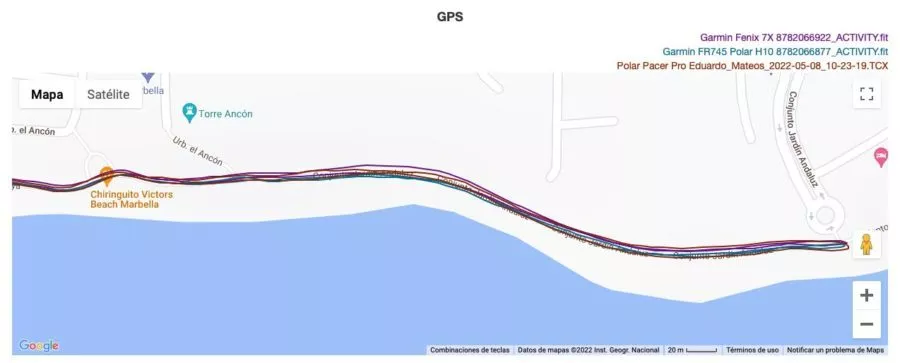
La zona que he señalado es un punto errático por parte del Fenix 7X. Dura unos cuantos minutos (aunque todos han comenzado el entrenamiento a la perfección). Más adelante se une a la gráfica de los sensores ópticos del Pacer Pro y del Polar Verity Sense.
En cuanto a los intervalos, rendimiento francamente bueno por parte de todos los integrantes de la comparativa en todo momento.
Simplemente he ampliado ligeramente esta parte de los intervalos en los que el Pacer Pro tiene dos pequeños deslices.

En cuanto a GPS no hay mucho que ver en esta ocasión. Para esta prueba he añadido el COROS APEX Pro en la mano izquierda. El Polar Pacer Pro era el único que tenía en la muñeca derecha, enseguida sabrás por qué lo digo…
Haciendo zoom al track se puede apreciar que las gráficas son en todo momento muy precisas, destacando siempre la línea del Polar Pacer Pro paralela a las otras dos, pero ligeramente separada. Y es que ciertamente el Pacer Pro va separado del Garmin Fenix 7X y del COROS APEX Pro, porque van en manos diferentes… así que hasta ese nivel de detalle han conseguido alcanzar.
Posiblemente se trataba de un día bueno a nivel de ausencia de nubes, porque la zona del paso por Puerto Banús es más estable de lo que fue en el entrenamiento anterior.
Pasemos ahora a un entrenamiento progresivo en bloques de 25 minutos de duración. La intensidad va en aumento poco a poco, aunque el entrenamiento se me da bastante bien porque no hay mucha variación de pulsaciones entre el inicio y el final a pesar de los cambios de ritmo.
En casi todo momento todos los sensores ópticos (Garmin Fenix 7X, Polar Pacer Pro y Polar Verity Sense) están en total consonancia con el sensor Polar H10 del pecho que estaba sincronizado con el Garmin FR745. Sólo hay algo de diferencia en el tramo final, donde se pueden apreciar algunas discrepancias. Así que voy a aplicar zoom a esa parte para ver qué es lo que está pasando.
Alrededor del minuto 55 hay una pequeña bajada por parte del Polar Pacer Pro, pero más adelante es el Polar H10 el que más errores introduce en la gráfica.
En este entrenamiento hay dos o tres fallos puntuales por parte del Polar Pacer Pro y del Polar H10, pero ningún fallo apreciable en el caso del Garmin Fenix 7X o el Polar Verity Sense, lo cual habla muy bien de ambos modelos.
En cuanto al track GPS de este entrenamiento todo parece bastante en orden.
Aunque lo mejor será hacer zoom para buscar algún error puntual y ver quién es el «culpable». Y lo que veremos a continuación es siempre al mismo culpable que tiene desvíos puntuales, primero recortando la curva y después alargándola. Por ejemplo aquí:
Y aquí:
El que comete la ofensa es el Polar Pacer Pro. Y repite un comportamiento algo similar aquí también.
En su descargo decir que se recupera rápidamente del error y que son fallos de triangulación puntuales. Pero es igualmente cierto que ni el Garmin Fenix 7X ni el Garmin Forerunner 745 cometen esos errores.
¿El resto del entrenamiento? Muy aburrido y sin nada más que destacar, el comportamiento es muy preciso por parte de todos los integrantes de la comparativa incluso cuando hay cambios bruscos de dirección.
En cuanto al altímetro barométrico, a falta de tener otro lugar donde mostrarlo, lo hago a continuación.
A tener en cuenta que no he calibrado ninguno de los relojes, y que el Fenix 7X sí puede conocer la altitud para autocalibrarse gracias a sus mapas DEM (todo sobre altitud, elevación y mapas aquí explicado). No me interesa el dato de altura exacto sino la gráfica en sí para ver que no hay desviaciones a lo largo del entrenamiento. Y en este caso son gráficas paralelas.
Se pueden apreciar cómo Polar hace un filtrado de los datos y muestra la gráfica mucho más plana mientras que los relojes de Garmin hacen más picos constantes. Eso lleva a que existan diferencias en entrenamientos sobre una superficie plana (como es básicamente este caso). Quizás esté relacionado con la función Hill Splitter, o que el altímetro de Garmin es demasiado «volátil» ante pequeñas diferencias en el terreno.
Mientras que los Garmin han marcado 62 metros y 50 metros de ascenso, el Polar Pacer Pro ha acumulado 30 metros. ¿Cuál tiene razón? Si hago uso de la corrección de desnivel de Strava me indica 47 metros, si lo hago en Garmin Connect pasamos a 177 metros (sabiendo cómo calcula acumulación en las rutas, es el que menos me creo). Un auténtico follón.
Al final con lo que me quedo es que es algo comparable entre distintos días utilices el reloj que utilices y que no hay desviaciones extrañas por un error del barómetro. Eso es lo importante.
Resumiendo toda esta sección, revisando tanto estos entrenamientos como otros que he realizado con el Polar Pacer Pro tengo buenas sensaciones con su sensor de pulso óptico. Nunca he tenido problemas con los sensores de Polar, y esto demuestra que a pesar del cambio de perfil y hacerlo más delgado no ha afectado a su buen rendimiento.
Es cierto que existen errores puntuales, pero también han existido en el sensor de pulso del pecho que habitualmente pensamos que es la medición más fiable. El rendimiento ha sido bueno en todos los entrenamientos de carrera incluyendo los de intervalos (ya sabéis que para ciclismo sí es imprescindible el sensor de pecho).
En cuanto al GPS, el rendimiento no ha sido malo, pero tampoco brillante. No hay grandes errores en los tracks, pero sí ha estado mostrando errores puntuales que rápidamente corregía.
No es algo que me parezca un impedimento a la hora de comprar el reloj, creo que el rendimiento es perfectamente válido para lo que es un reloj de este tipo, lo único que digo es que podría ser mejor.
¿Quieres ayudar a la web? Comprar Polar Pacer Pro
Espero que este análisis completo te haya ayudado a decidir si es un dispositivo válido para ti o no. Todo el trabajo que realizo puedes consultarlo sin ningún tipo de coste, pero si quieres apoyar la web y con ello el trabajo que realizo, la mejor forma de hacerlo es comprar tu nuevo dispositivo a través de los enlaces que facilito a continuación.
Y si no lo compras hoy, ¡acuérdate de pasar por aquí cuando vayas a hacerlo! A través de estos enlaces no sólo conseguirás un precio muy competitivo y la mejor atención al cliente, sino que además yo recibiré un pequeño porcentaje sin que a ti te cueste ningún desembolso adicional. Eso es lo que permite que pueda seguir ofreciéndote pruebas como esta en la página.
No lo vas a comprar, ya lo tienes o Amazon no es una opción; ¿pero te gustan las pruebas que realizo y quieres mostrar tu apoyo a la página? Entonces considera suscribirte como miembro VIP. Por encima de todo estarás ayudando a soportar la página, pero además disfrutarás de beneficios exclusivos.
Si tienes dudas, recuerda que tienes la sección de comentarios en la parte inferior, donde trataré de resolver todas tus preguntas.
Opinión Polar Pacer Pro
El Polar Pacer Pro es un reloj que no aporta novedades al mercado. Todo lo que ofrece ya lo tenían otros modelos de la marca de una forma u otra. El único añadido es el Walking Test, enfocado a usuarios que no son capaces de completar el Running Test.
Con este nuevo reloj Polar prácticamente ha condenado sus modelos de gama superior. Con el Pacer Pro en el mercado ya no hay motivos para comprar un Vantage M2, y me costaría encontrar motivos razonables para compensar la diferencia de precio con el Vantage V2. El Grit X también queda en tierra de nadie y el único que se salvaría de este asesinato familiar es el Polar Grit X Pro, simplemente por estética y materiales.
No obstante creo que este reloj no es acerca de presentar nuevas funciones, sino de vender unidades y que Polar pueda hacer caja. Y ofrece buenos motivos para ello. La inmensa mayoría de funciones de Polar, un procesador más rápido, una pantalla de mayor calidad, empaquetado en un conjunto pequeño y ligero y con un precio atractivo.
No es un reloj que vaya a llamar la atención por lo que ofrece, pero sí se va a vender muy bien por lo que es en su conjunto.
Y hasta aquí… ¡gracias por leer!

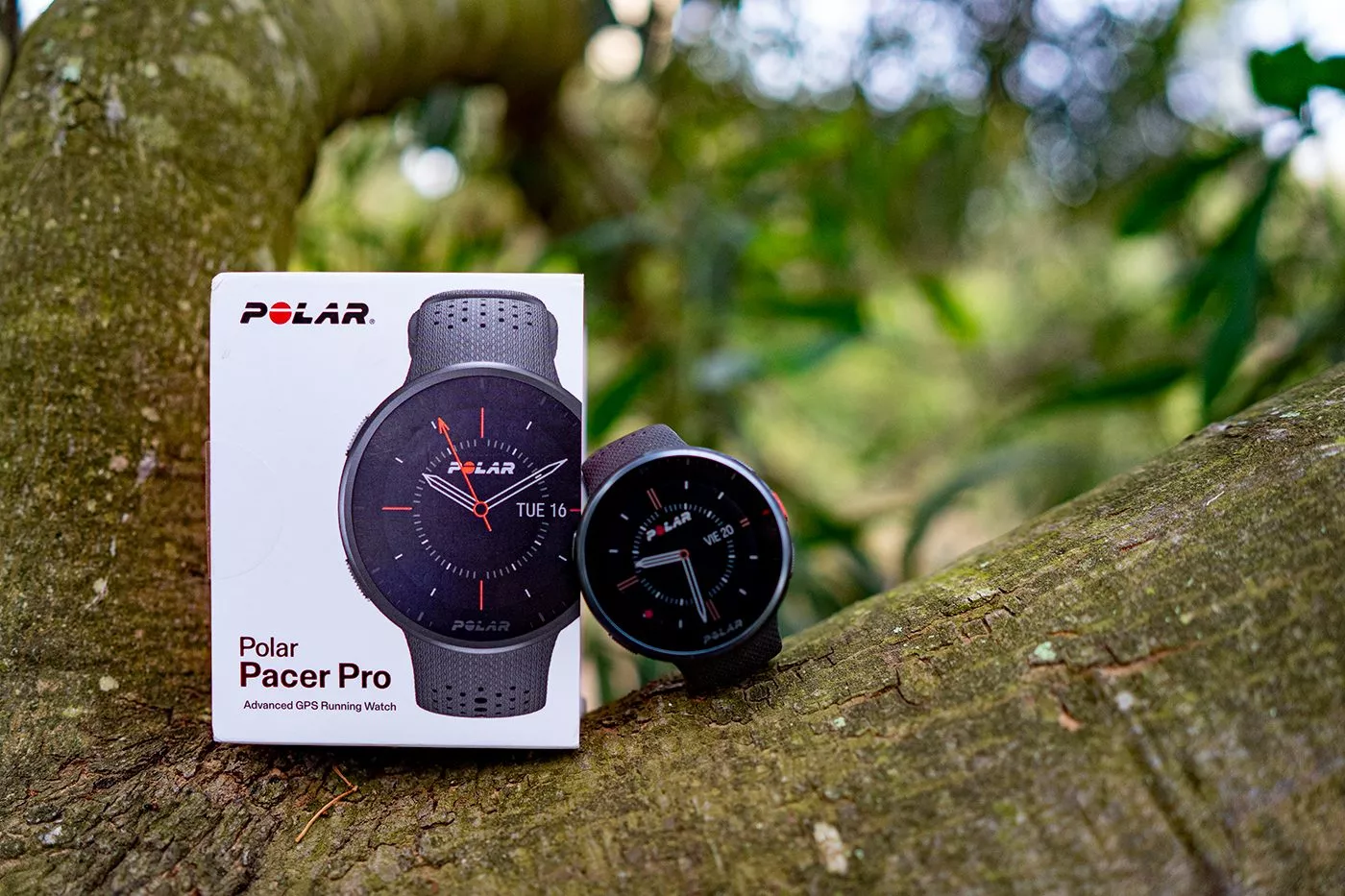






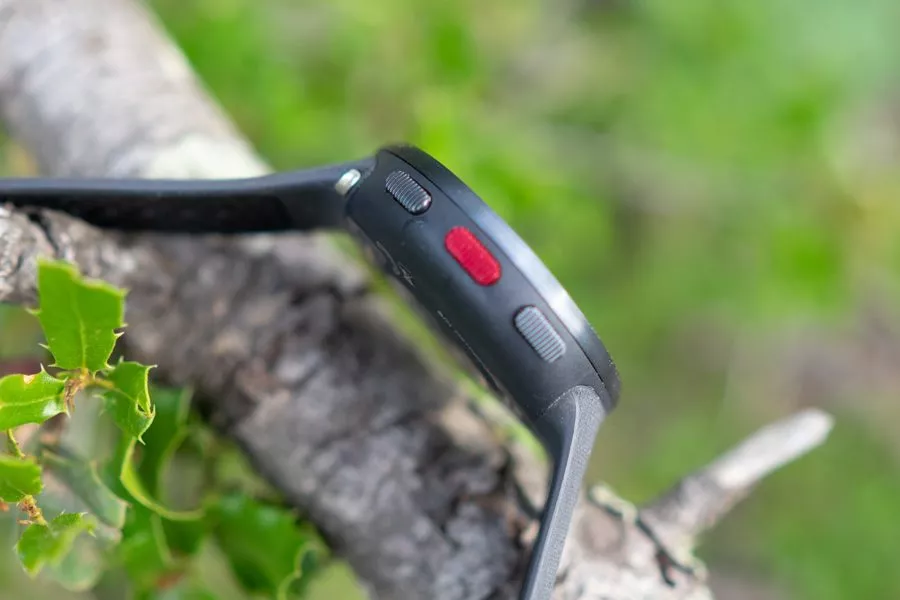
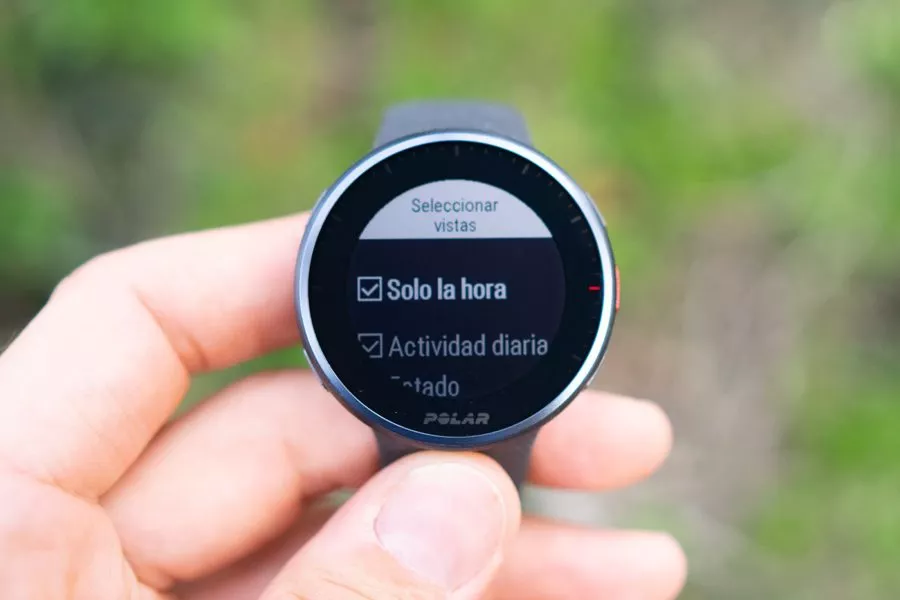
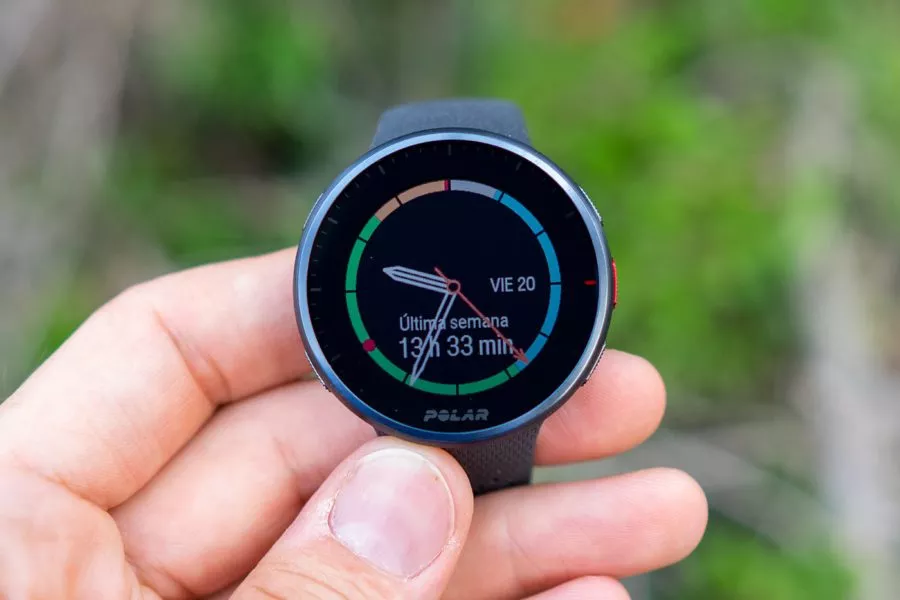
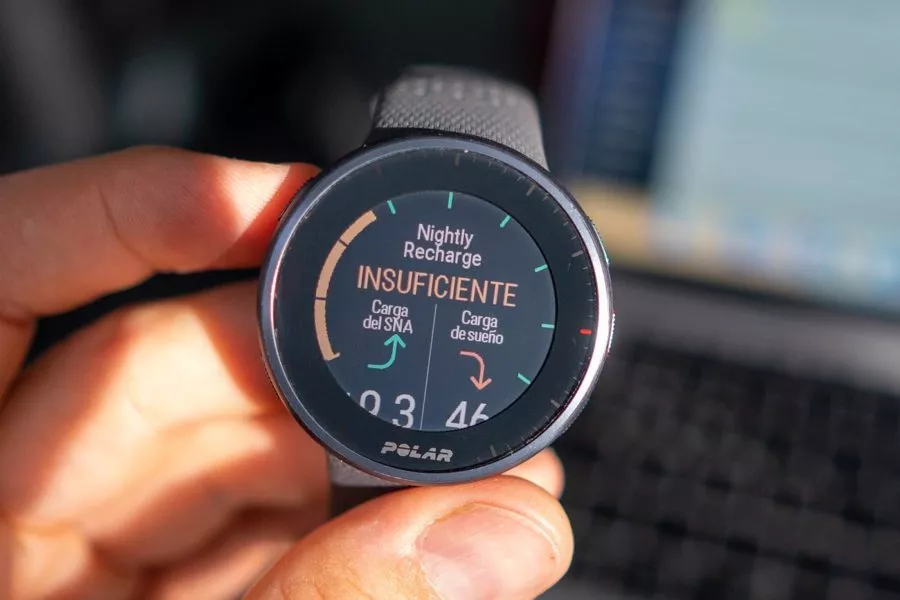
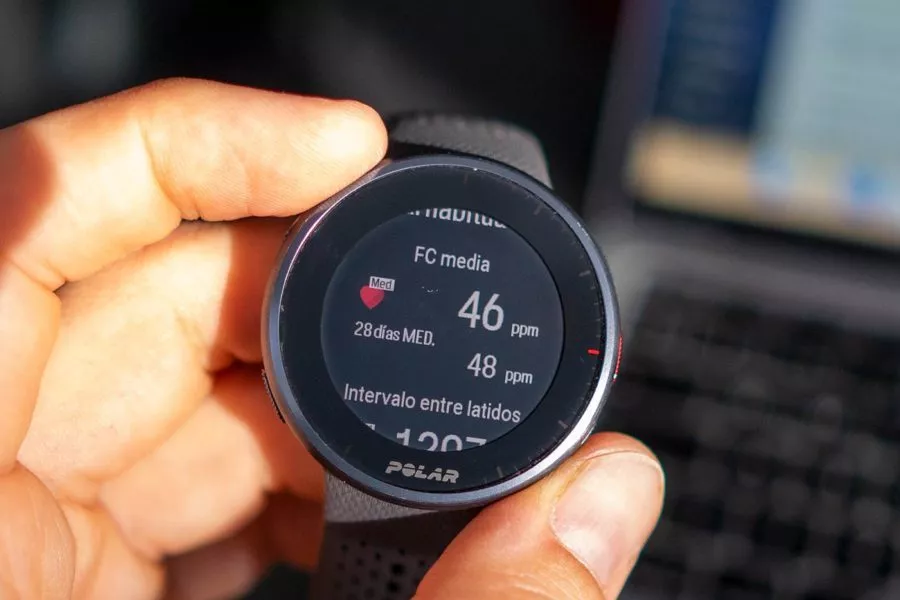
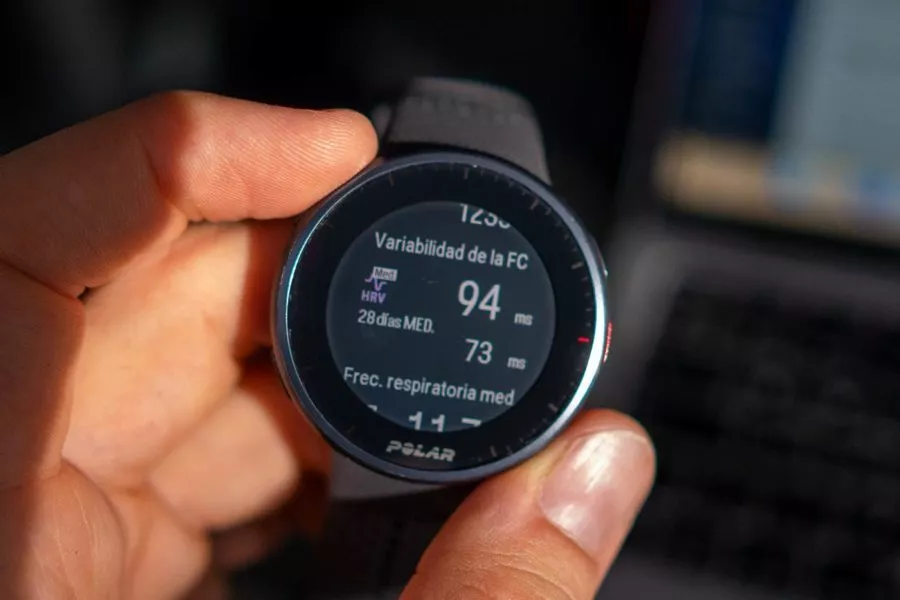
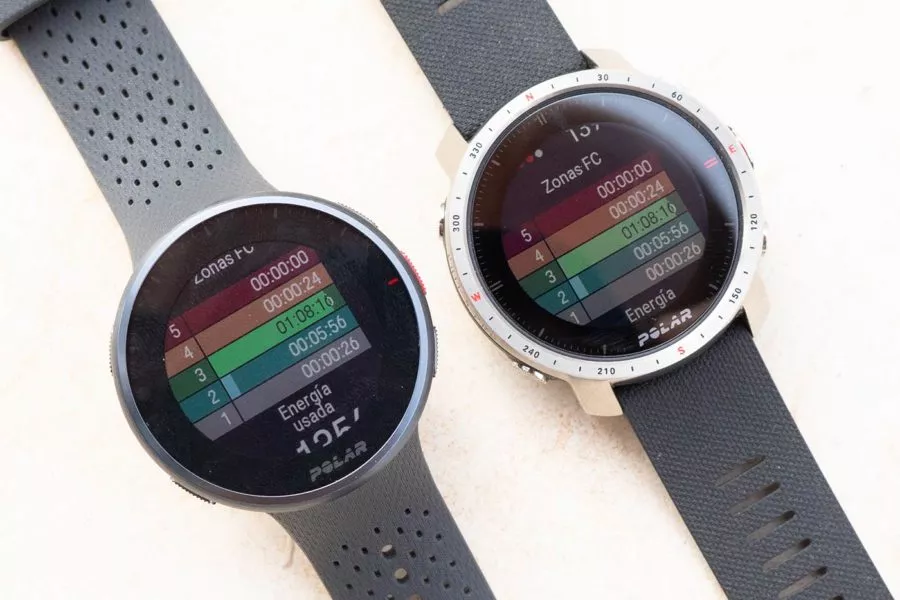
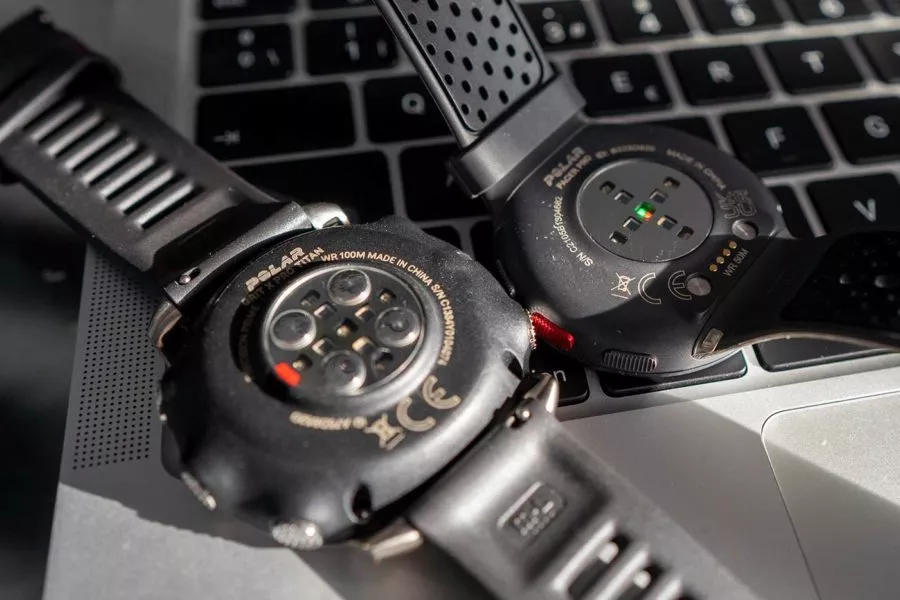
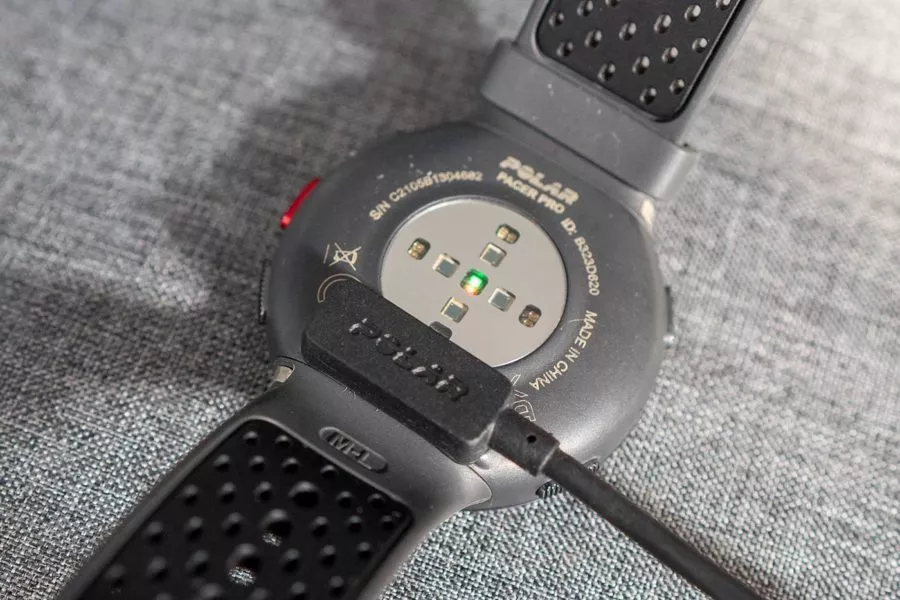
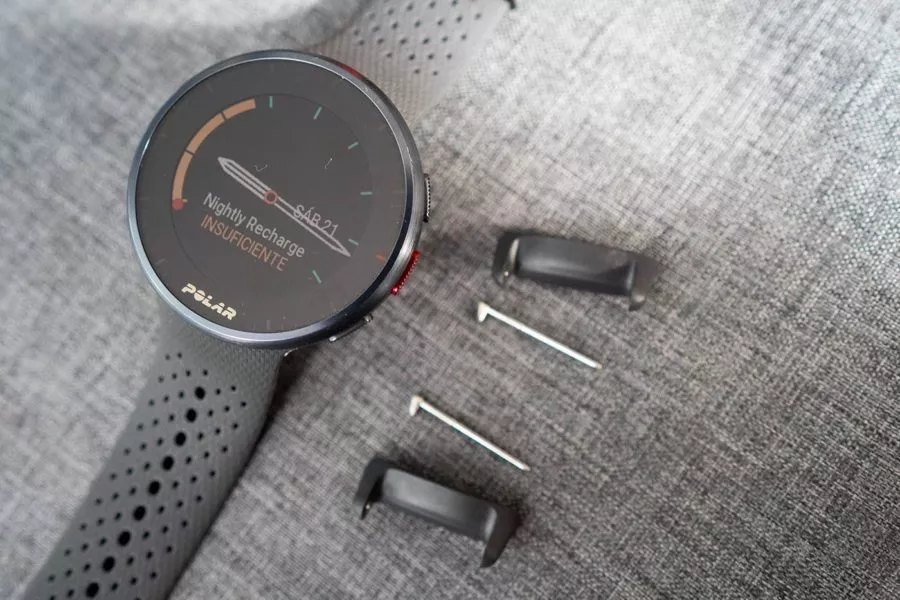
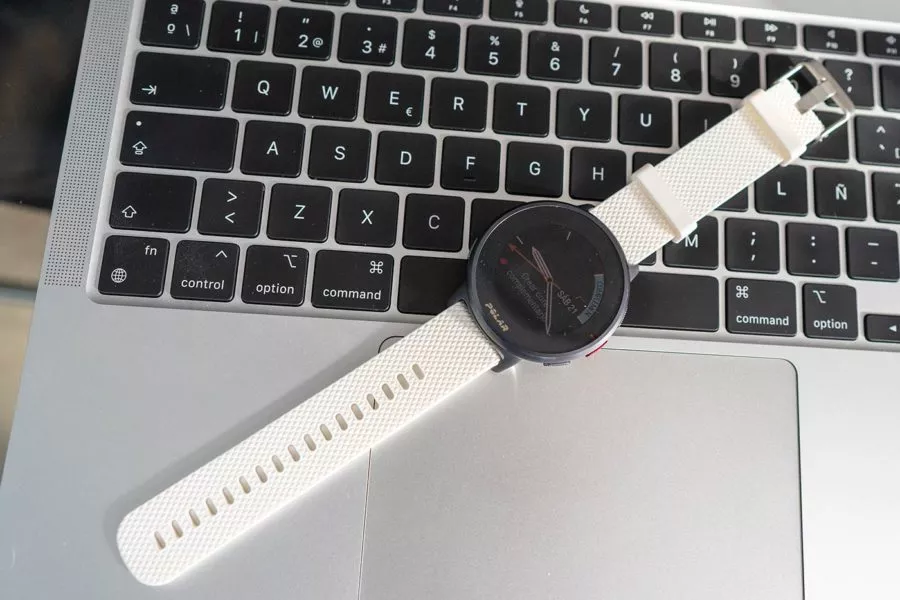
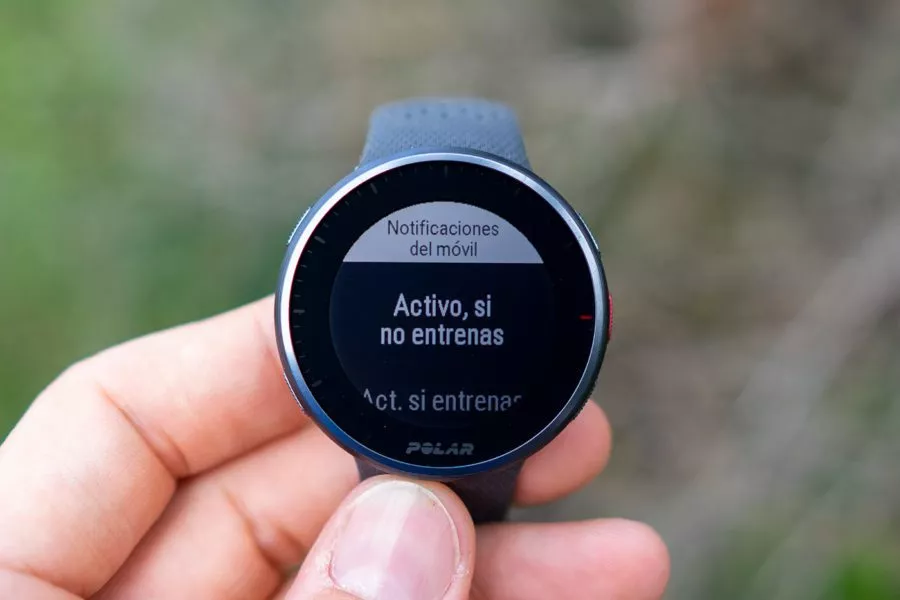
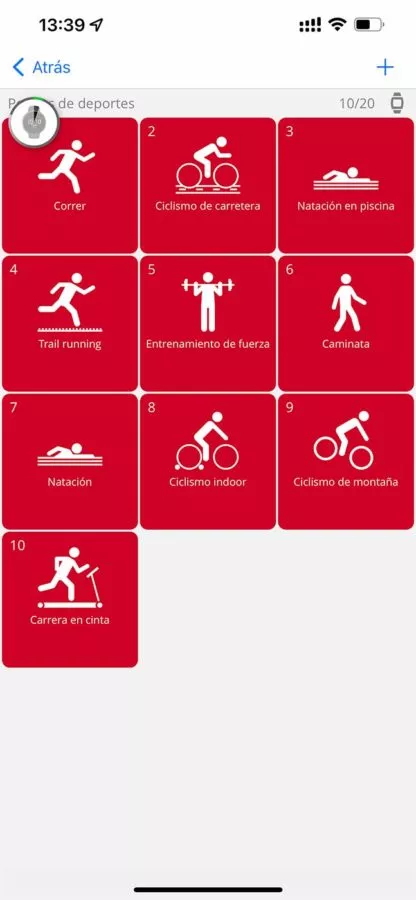
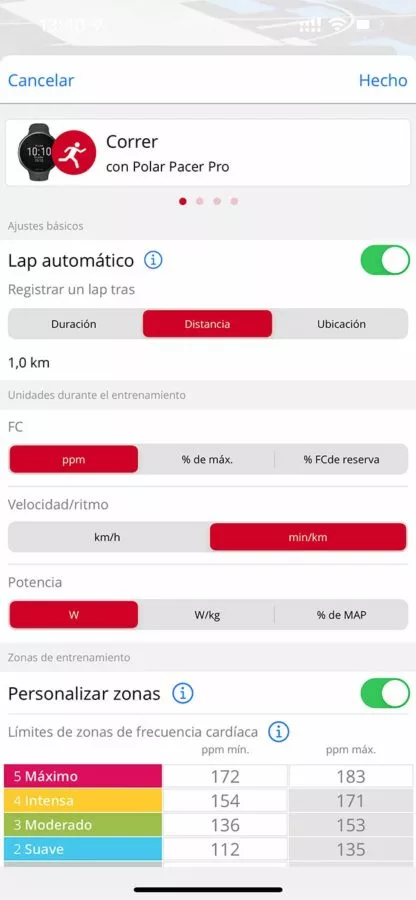
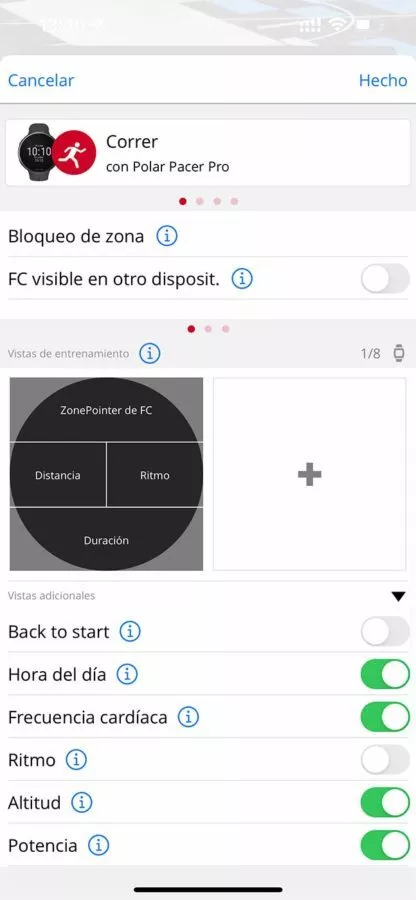
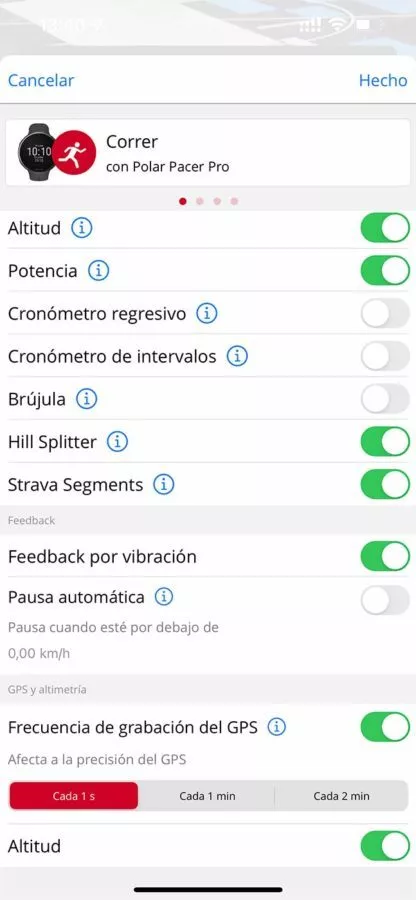
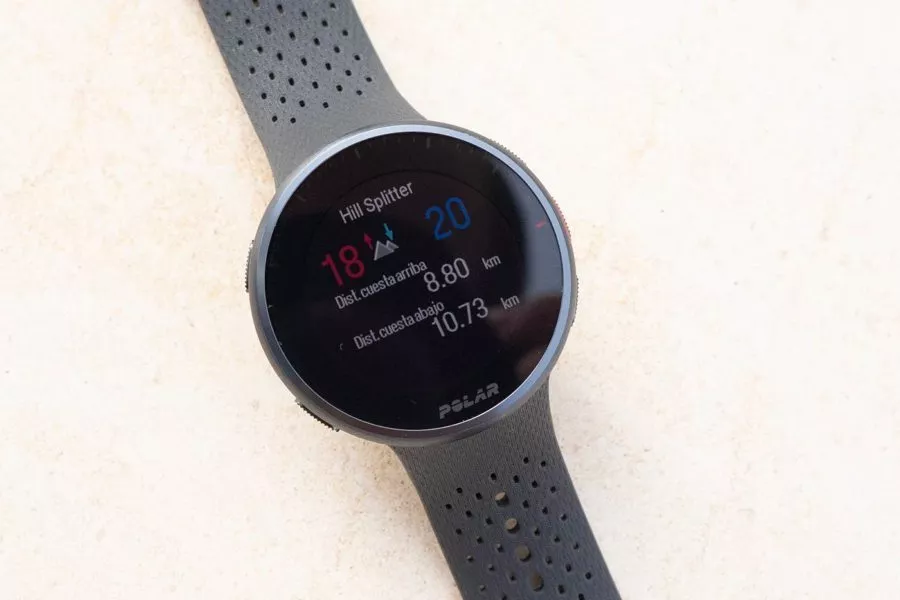
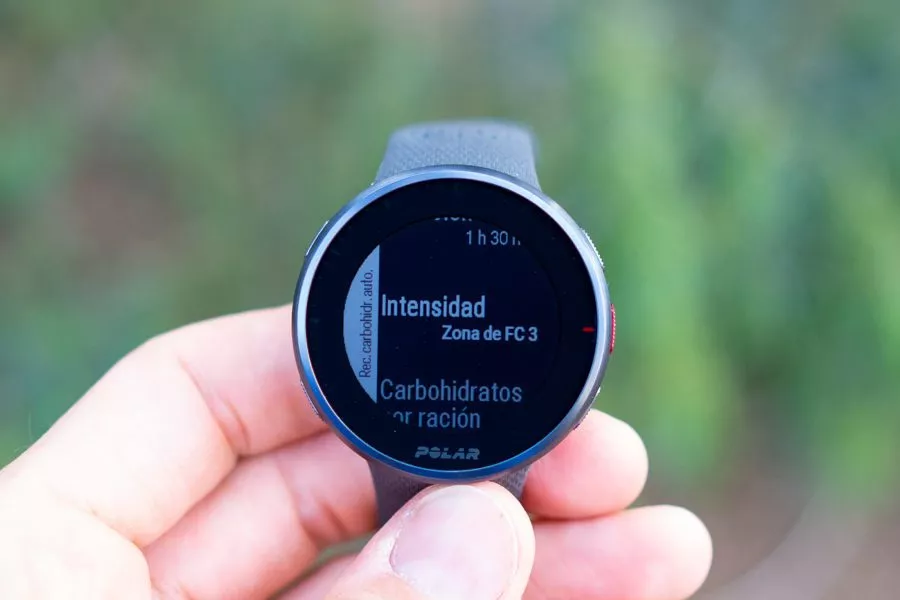
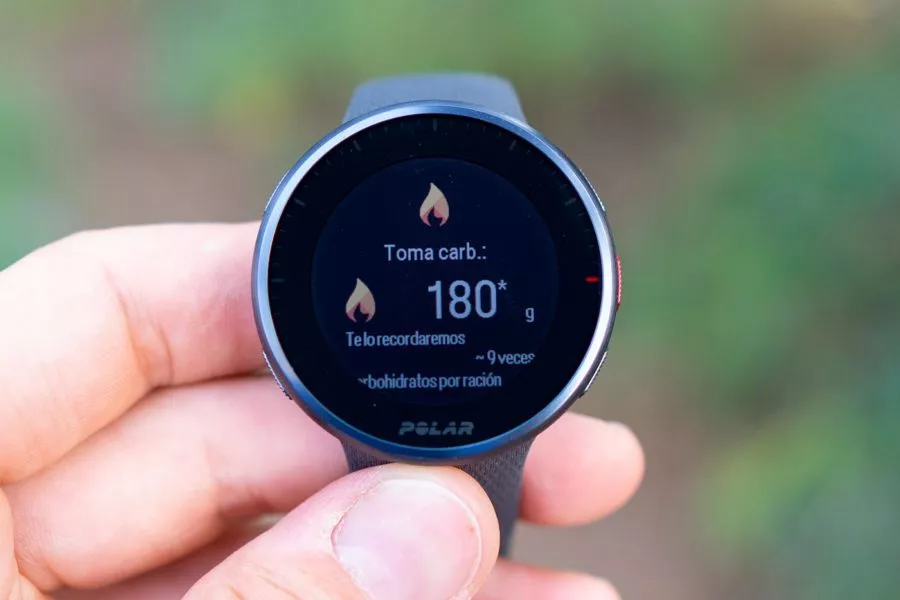
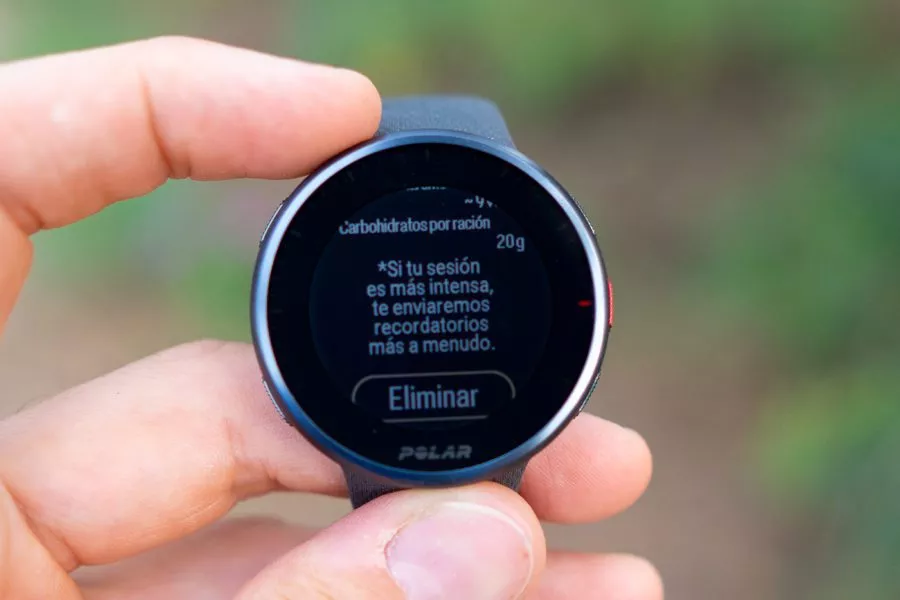
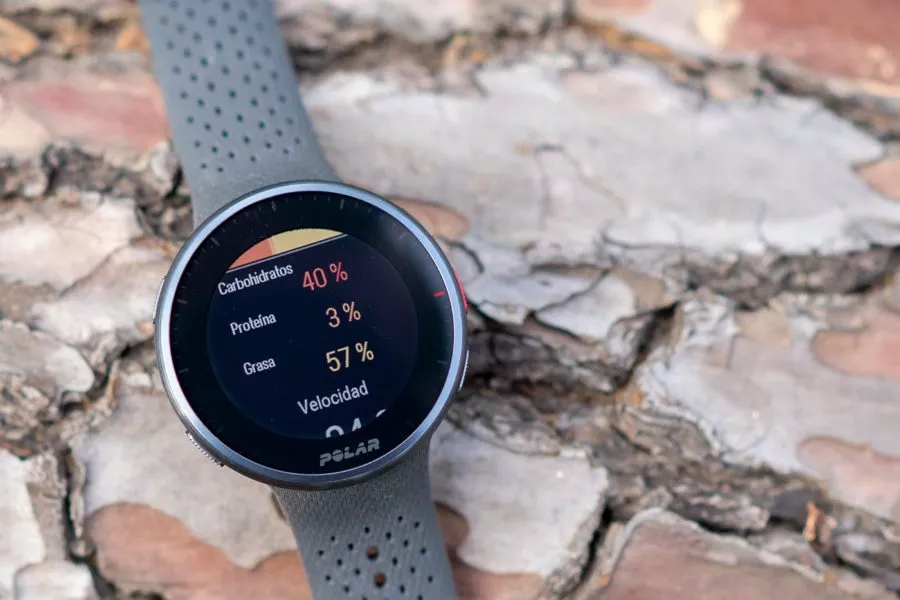
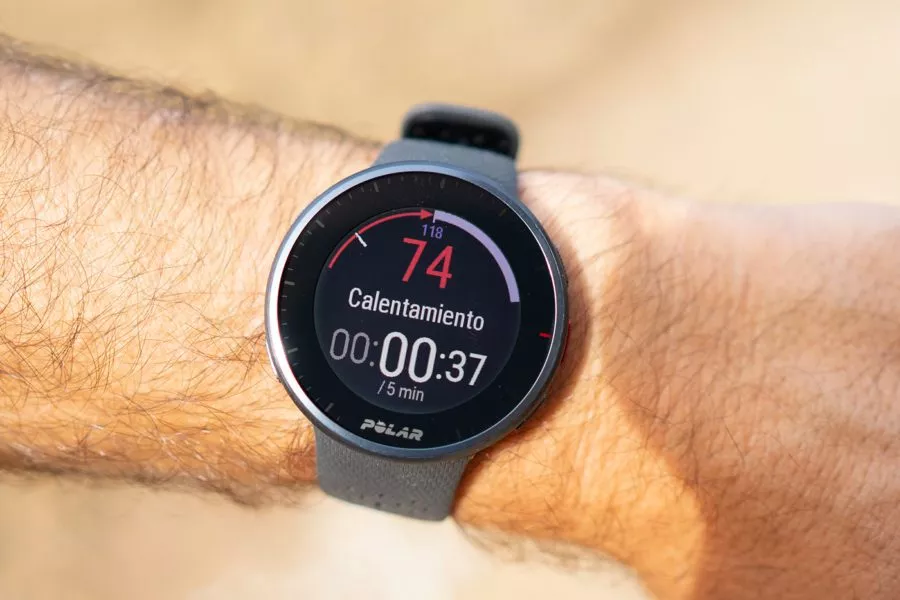

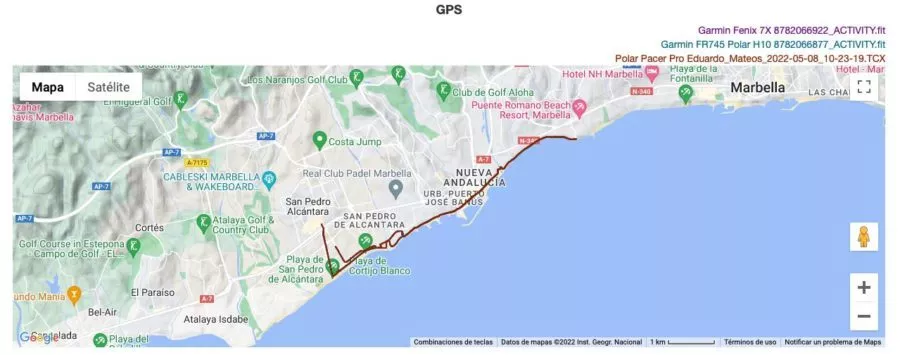
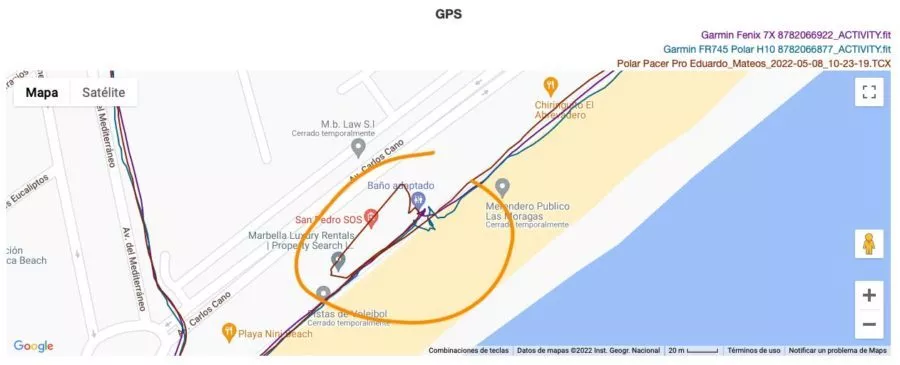
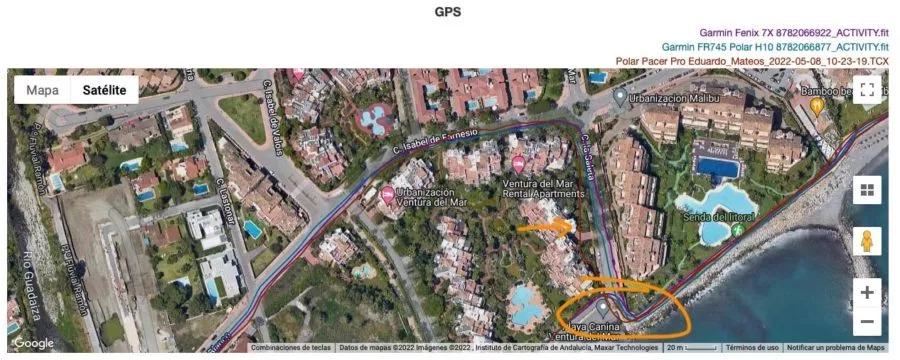
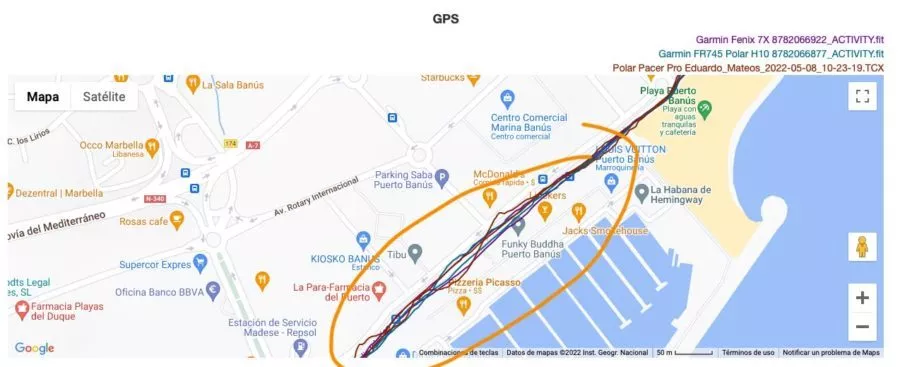

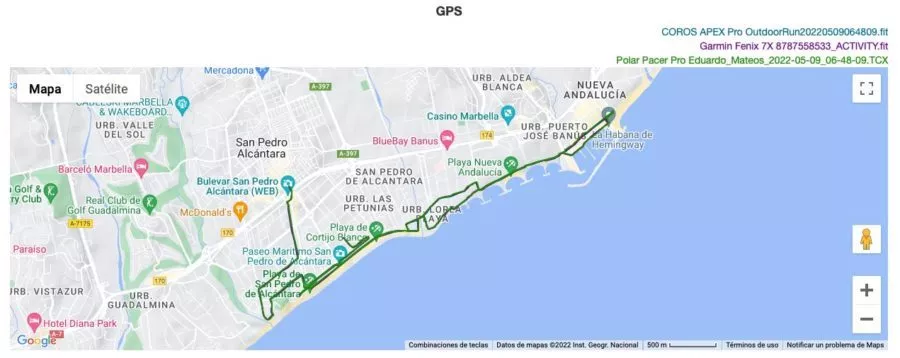
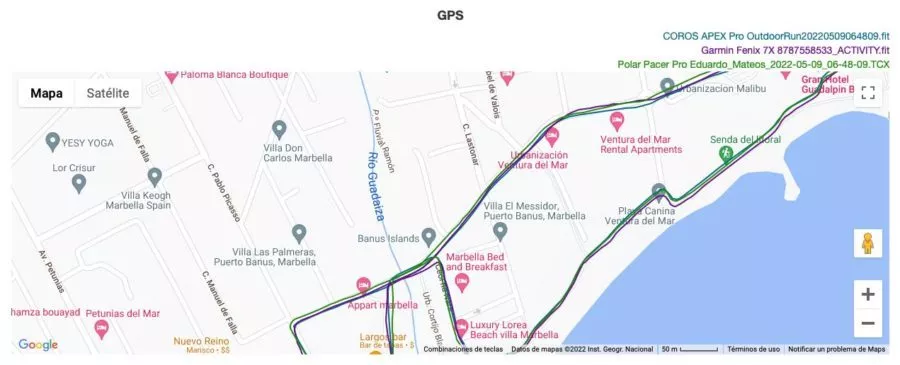
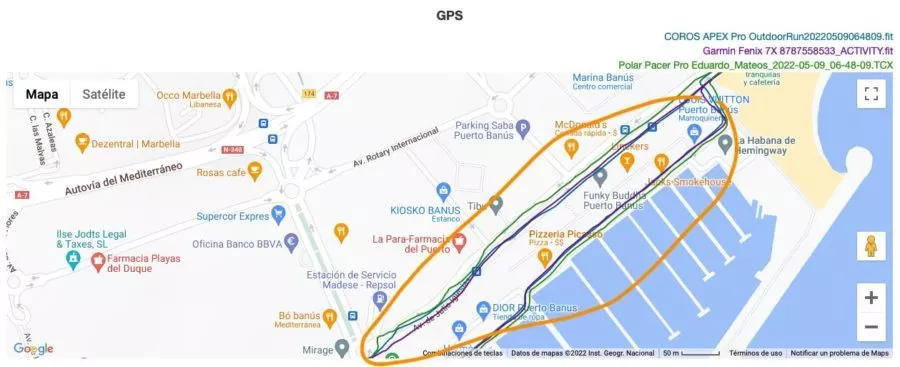


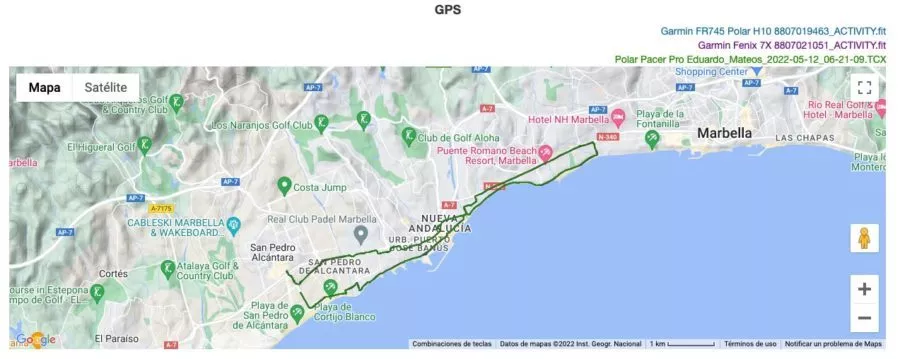
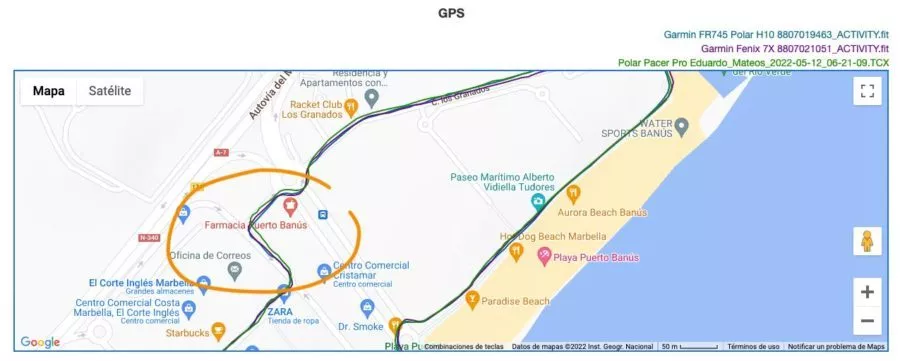
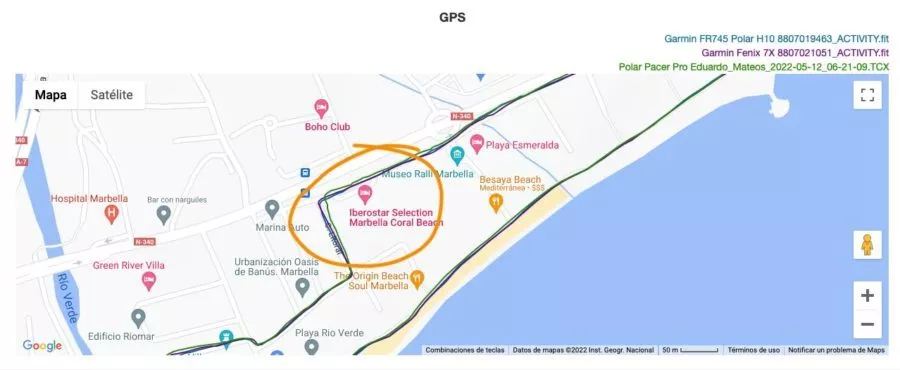
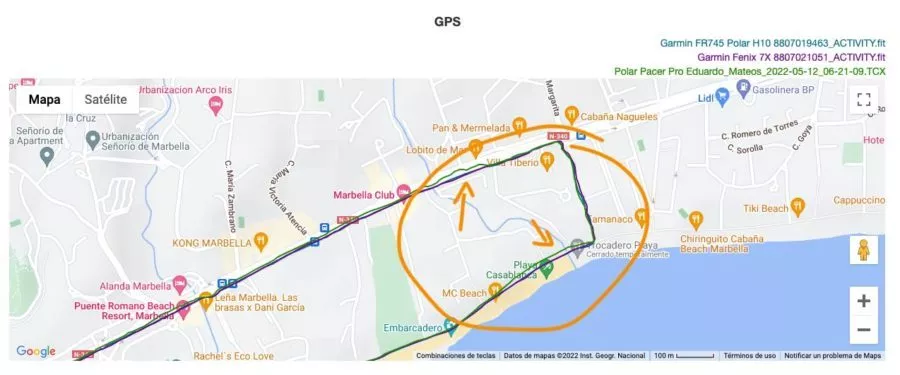
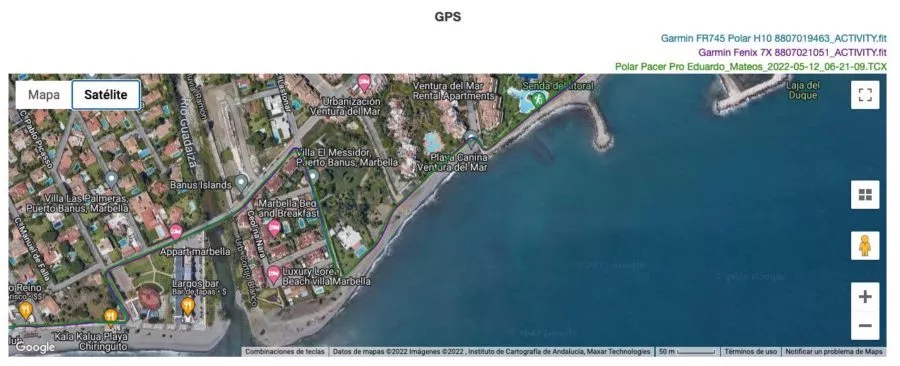


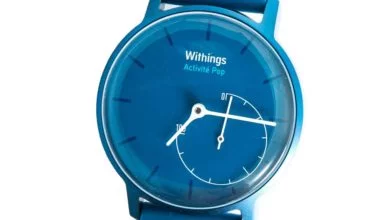


El heredero espiritual del m400/M430.
Un muy interesante aparato de Polar, de gama media donde hace las cosas mejor en esta marca y que le va a poner las cosas complicadas al futuro garmin forerunner 255 no music.
Y según como evolucionen los precios en el mercado también al forerunner 745.
Ahora queda que saquen un «superPacer» con Wi-Fi y mapas y ya tenemos al heredero del v800. Con muchisima suerte, y con la base del «superPacer» incluso sacan algo para ciclismo, como lo fue el ciclo computador m650.
Este último párrafo es «whisful thinking» , claro.
Parece un gran reloj calidad precio. Por cierto hay algo que me resulta llamativo en exceso, con estos GPS polar se ha cargado directamente las ventas de m2 y muchas de grit x y v2 (como bien dices) y me pregunto, incluso veo muchas posibilidades de que polar haga presentación masiva de relojes este año. Ha mejorado tanto en calidad precio, en memoria, pantalla etc que no veo otra opción que no sea renovar la gama entera incluso diría que el comentario de garrafa no va desencaminado en su última parte; son varias patentes últimamente y enlazadas entre sí que precisamente tienen que ver con ubicación basadas en mapas , reloj o ciclocomputadores para bicicleta (algo que ya dejó caer el CEO) escribí aquí que tenía la intuición de que sacaran algo de ciclismo este año y creo que será así, distinto será el formato pero creo que algo habrá…de hecho considero que este movimiento de sacar el pacer apunta a un borrón y cuenta nueva. Muchas gracias por tus pruebas de material, se agradece mucho y sería interesante tu opinión al respecto.
No creo que Polar esté en disposición de poder hacer una renovación completa de gama. A nivel de fabricación eso es bastante complicado.
Acerca de ciclocomputadores es algo que Polar ya ha trabajado en el pasado, que en principio tiene un acceso a mercado bastante complicado, pero ya hemos visto que con la idea correcta (como Hammerhead con el Karoo) se puede llegar a algo. No lo descarto, pero no termino de verlo en la situación actual de Polar.
Llevo usando polar de siempre (salvo un Forerunner 305) y ahora veo claramente que mi m460 es del precámbrico, a veces miro al cs600x y me da ganas de volver a ponerlo. Supongo que tienen sus prioridades pero si no saca algo nuevo me obligan a esperar que saca Garmin….. obviamente cuando corresponda y viendo que tampoco sacan un reloj outdoor completo (alarma de tormenta,perfil barómetro, tendencia barómetro) también me está empujando con fuerza hacia otra marca…. veremos, ya se verá.
Por cierto; muy intrigante tus últimos párrafos.
Si tengo que elegir entre pilar pacer pro y grit X, ambos por el mismo precio. Con cual te quedarías?
Salvo que la estética del Grit X te pueda, me quedo con el Pacer Pro. Plataforma más actual y mismas prestaciones por un precio habitualmente más económico.
Muchas gracias! Otra pregunta, entre pacer pro y garmin fr255. Con cual te quedabas de los 2? Y porque? Gracias!
A precio similar, el Garmin es un modelo más completo, aunque principalmente lo que debe definir la compra es en qué plataforma te encuentras más cómodo y sobre todo si eres usuario de TrainingPeaks
Utilizo strava. Principalmente lo quiero para medir velocidad, distancia hr etc y guardar resultados posteriormente. No utilizo trainingpeaks actualmente, pero igual en un futuro podría utilizarlo.
El «problema» con TrainingPeaks es que no hay descarga de entrenamientos estructurados para realizarlos desde el reloj, algo que sí está presente en todos los demás modelos de la competencia.
Entre polar pacer pro y garmin FR 255?, cual te quedarías y porque?
Una consulta, el Pacer Pro tarda mucho en encontrar la señala GPS? Tengo un Polar que es insufrible….
Gracias!
No, la localización de satélites es bastante rápida.
Hola, Eduardo. Muy interesantes tus aportaciones. Una pregunta por si me puedes ayudar… Estoy buscando un reloj de gama media y quería aprovechar las ofertas de black friday. Estoy mirando Garmin 255, Polar pacer pro y suunto 5 peak. Creo que la mejor opción es el 255, pero algo mas baratos serían los otros dos. Entre polar pacer pro y suunto 5 peak, cuál sería tu elección? Gracias!
Salvo que quieras hacer navegación de rutas, el Pacer Pro es un reloj más prestaciones. Echa un vistazo al post de las ofertas de Black Friday que está ahí los mejores precios.
Gracias!!
Hola Eduardo,
EL Coros pace 2 está a la altura del Polar pace pro?
Son relojes similares en prestaciones. Donde está la diferencia es en la plataforma
Es mas completa la de Polar?
Sí, principalmente en cuanto a seguimiento de carga de entrenamiento.
Muy interesante análisis.
Después de la actualización de Coros en abril de 2023 ¿Qué opinión darías al comparar el Polar Pacer Pro con el Coros Pace 2, siendo que este último ahora cuenta con funciones de tracking en rutas? ¿Vale la pena desembolsar unos 100 Euros adicionales para ir a por un Polar?
Gracias. Un cordial saludo.
El Polar Pacer Pro ahora mismo se puede encontrar con buenas ofertas que lo acerca bastante al COROS, y creo que es una buena opción por la profundidad de su plataforma y tener mejores materiales. Aunque a ese precio el PACE 2 es sin duda una gran compra. Difícil decisión, creo que la elección debería venir elegida más por la plataforma o, por ejemplo, la necesidad de realizar entrenamientos de TrainingPeaks (que el Polar no soporta).
Hola Eduardo, crees que en un futuro Polar admita descargar los entrenamientos estructurados desde Training Peaks?
Gracias
No pondría la mano en el fuego… es algo que les he pedido en numerosas ocasiones, pero de momento no se ha cumplido
Hola Eduardo!! He llegado a esta publicación buscando información del Polar Pacer Pro que he visto que en la web de Polar está por 164€, solo en color blanco. Estaba planteandome comprarme el Garmin Forerunner 245, pero con este precio del Polar … me lo estoy pensando.
Ya soy usuario de Polar, actualmente un M400 y es cierto que tenía ganas de probar Garmin, pero no tengo queja tampoco con Polar, quizá un poco el tema del gps.
¿Crees que haría bien si me pillo este Polar? O por un poco más, te decantarías por el Garmin?
Gracias de antemano.
Un saludo
Contestado en Telegram 😉
Buenos días, Eduardo:
Enhorabuena por tu blog.
Tengo una duda: quiero un reloj deportivo, pero también para mi día a día. No hago trail ni rutas de montaña, me gusta la estética moderna y corro y hago entrenos de interior (fuerza).
El Pacer Pro está por 165 euros (muy buen precio, pero no sé si muy enfocado en el running).
En El Corte Inglés está el Polar Grit X Pro Zafiro (no titanio) por 288 euros. En Amazon el Vantage V2 con banda h10 por 270 euros. No sé si es lo que busco y estarán desfasados después de varios años en el mercado. Aunque me parecen buenas opciones por su precio (muy enfocados en aventura/running?)
Y un modelo que acabo de descubrir es el Garmin Vivoactive 5 por 248 euros, que quizá pueda encajar para lo que busco…
Que opción escogerías según mis necesidades con esos precios?
Gracias y un saludo.
Tito
Para tu uso el Vivoactive 5 te encaja bien y si buscas estética moderna agradecerás la pantalla AMOLED. El Corte Inglés ya no tiene stock, pero sí lo tienes bien de precio aquí
Gracias! Al final lo pillé por 248€ con la oferta de El Corte Inglés. Debí de llevarme el último, jajaja.
Saludos